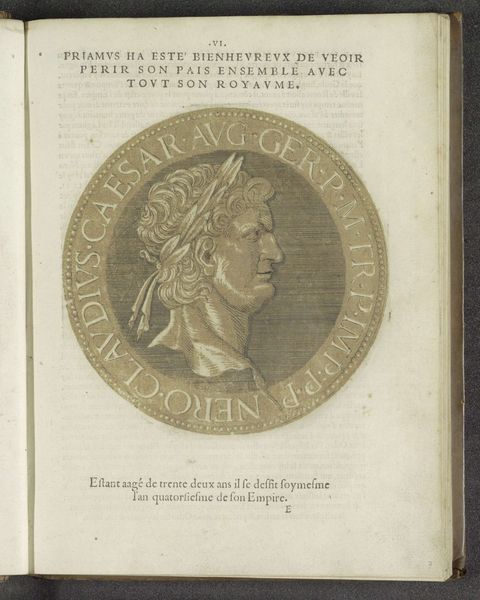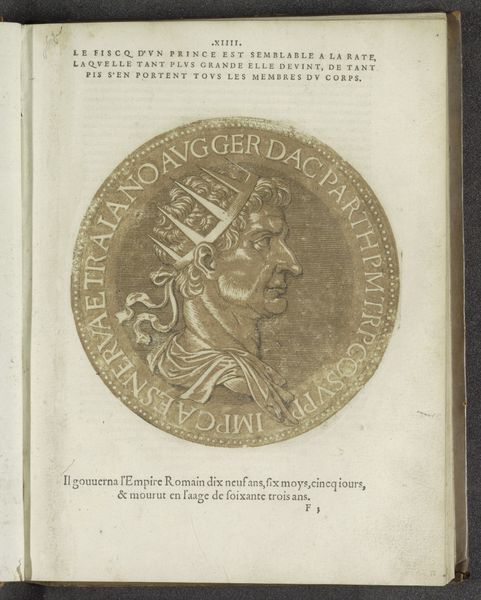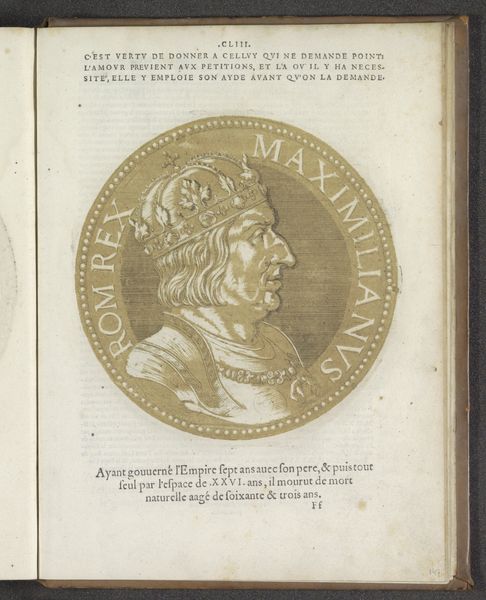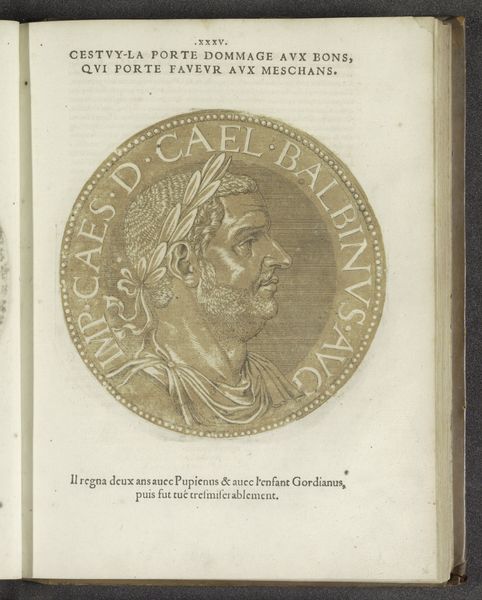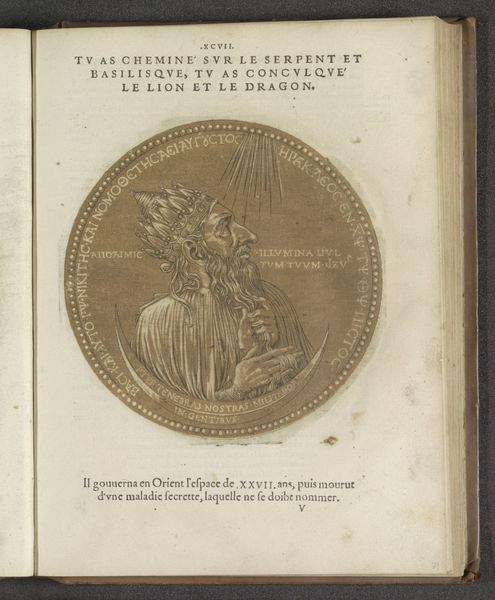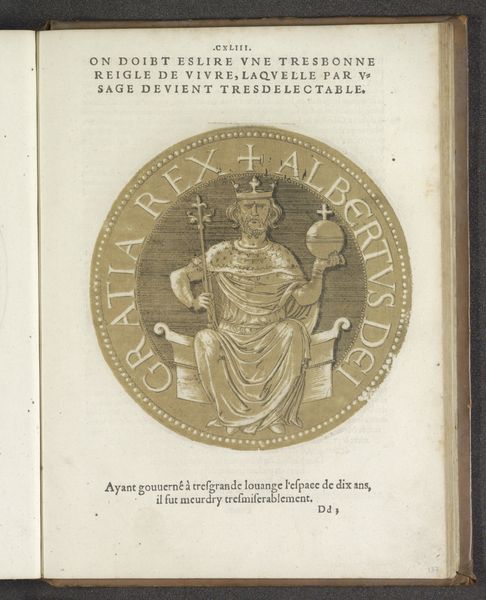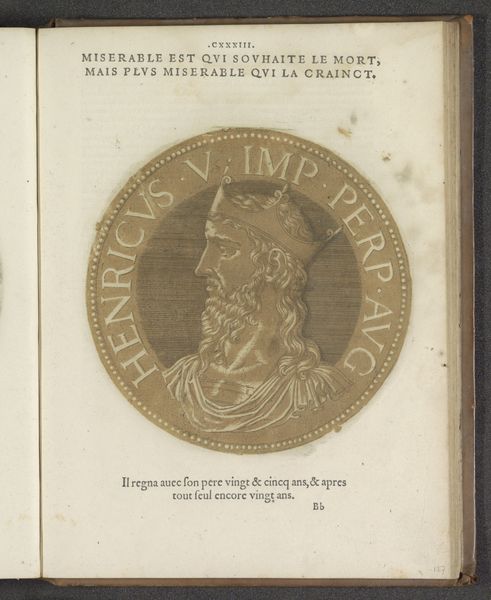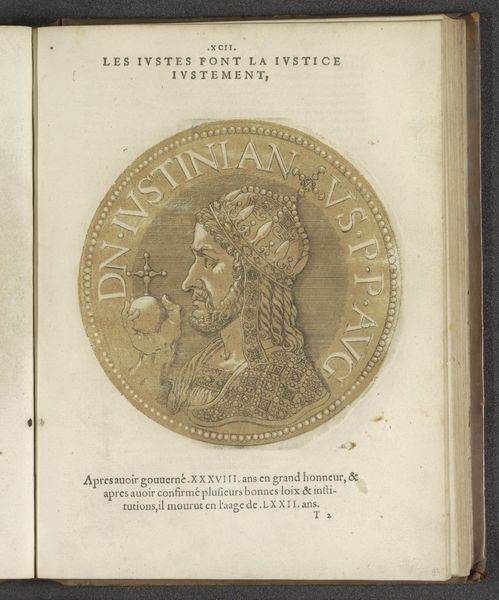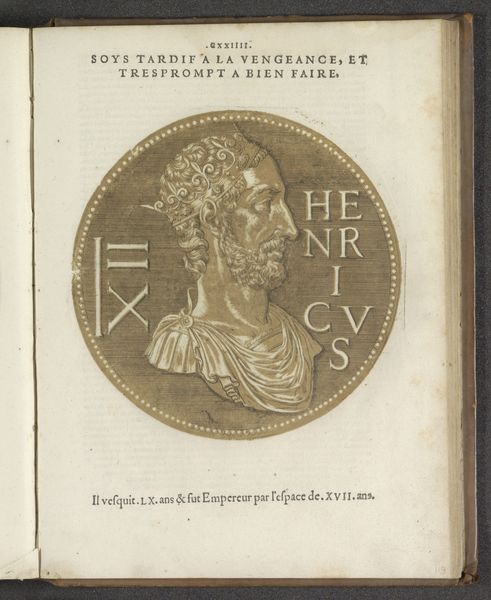
drawing, print, engraving
#
portrait
#
drawing
# print
#
coloured pencil
#
ancient-mediterranean
#
line
#
history-painting
#
engraving
Dimensions: height 183 mm, width 180 mm
Copyright: Rijks Museum: Open Domain
Curator: Here we have an engraving, a print of a drawing by Joos Gietleughen, dating from 1557-1559. It's entitled "Portret van keizer Vespasianus"—Portrait of Emperor Vespasian. Editor: My initial impression is of aged elegance. The monochromatic palette emphasizes the meticulously rendered line work. It gives a sense of depth while remaining quite spare. Curator: Indeed. The very act of reproducing an ancient Roman emperor during the Renaissance is telling. What does Vespasian represent in the mid-16th century? His reign was marked by relative peace and prosperity, following a period of turmoil. This portrait could reflect a yearning for stability in Gietleughen's time. Editor: Agreed, and the composition itself evokes classical forms: the laurel wreath, the profile view… it's almost a symbolic resurrection of Roman virtues rendered with Northern precision. The very round shape it stands for a coin. Curator: Absolutely. Think about the function of portraiture during this period. It’s not just about likeness; it’s about constructing a historical narrative and a set of values. This image may have been commissioned to legitimize the subject as a sign of cultural capital to those who sought inspiration from the emperors of antiquity. Editor: The restrained color palette further enhances this intellectual tone. The light feels directional, accentuating the contours of Vespasian's face. It's as though light itself is being used to carve him out of history. Curator: We also need to consider the artist’s own position. Gietleughen wasn't a well-known master, but rather part of a network of artists who circulated images and ideas. Reinterpreting figures of authority, especially one associated with empire, carries a certain subversive potential, perhaps inadvertently or deliberately, a potential tied to their socio-economic environment. Editor: Perhaps, or is this subversion overshadowed by deference to classicism? Still, it makes me think about how this piece captures a moment when artists like Gietleughen acted as cultural transmitters. Curator: Precisely, and in bringing it to the present we find its role reversed: no longer representing a past narrative of history, but one of Renaissance print production and interpretation. Editor: So true. This seemingly simple print truly holds layers within layers.
Comments
No comments
Be the first to comment and join the conversation on the ultimate creative platform.
